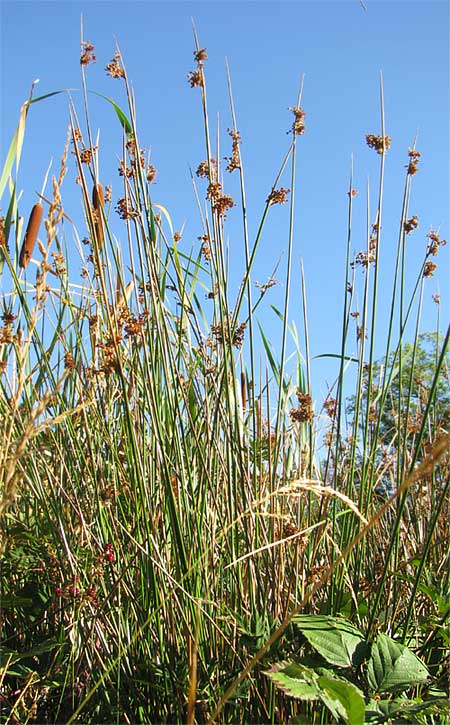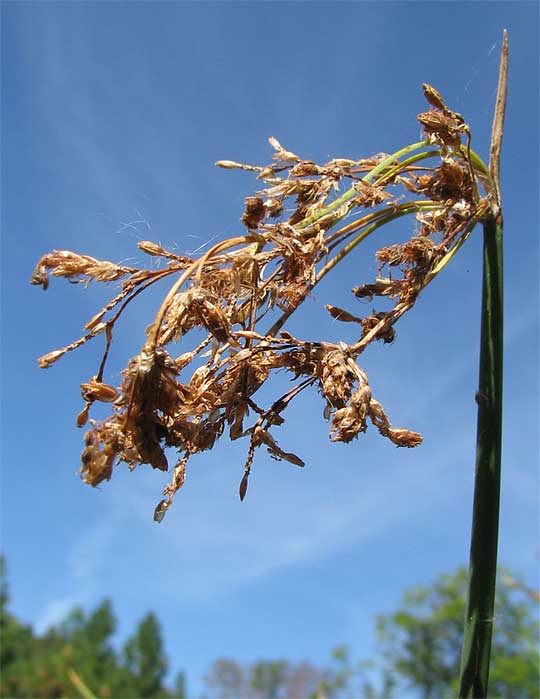Excerpts from Jim Conrad's
Naturalist Newsletter
from the September 13, 2009 Newsletter, issued from the Siskiyou Mountains west of Grants Pass, Oregon:
TULE
Also along the pond's banks a certain wetland-loving plant presents itself as densely bunched clusters of waist-high, green, slenderly cylindrical, hollow, sharply pointed stems. Tousled, brown inflorescences bearing many tiny flower spikelets erupt from near the top of each stem, just below the sharp tip, as shown below:

Notice the cattail in the background at the left. It's typical that at the pond's edge first there's a line of cattails, then just above the cattails on drier ground this plant appears.
The plant is Tule (pronounced "TOO-leh"), sometimes also called bulrush, though bulrush is a name applied to several kinds of plants. Tule is a member of the Sedge Family, the Cyperaceae. Its technical name is SCHOENOPLECTUS ACUTUS var. OCCIDENTALIS, which bugs me because all my life it's been known by the much easier-to-remember name Scirpus. The name Tule is derived from its Nahuatl name Tollin, Nahuatl being the language spoken by the descendents of Mexico's ancient Aztecs.

Above a close-up of an inflorescence emerging just below a withering tip shows that flowering time is long past. Now the heads are dropping their fruits, leaving naked spikelet axes behind. You can see some hard, shiny, 3-angled, 1/10th-inch (2.2 mm) achenes (dry, one-seeded fruits not splitting open when mature), along with the chaffy bracts subtending them, in the palm of my hand below:

Native North Americans as well as the Aztecs knew the Tule, and used it a lot. Tule's cylindrical stems are tough and pliable, and inside they're spongy, so they're great for weaving. You can see a wonderful picture of a moccasin woven of Tule by California's Klamath Lake people by Googling the four words, within quotation marks, "Kumeyaay, Pomo and Yokuts". That query should take you to a Google book link. Click on the link and then you should get a page with the moccasin picture just below the words.
Native Americans also constructed reed boats from Tule, as well as mat-like walls for their houses, and even things like duck decoys. Tule rhizomes also are edible. Native people burned marshes at the end of the year to encourage new Tule stems to emerge. Wildlife use Tule thickets as shelter and nesting sites, and many small animals eat the seedlike fruits.
The species occurs throughout North America deep into Mexico, but not in most of the US Southeast. The variety occidentalis, which we have, is limited to North America's southwestern third or so. Other similar species do occur in the Southeast.